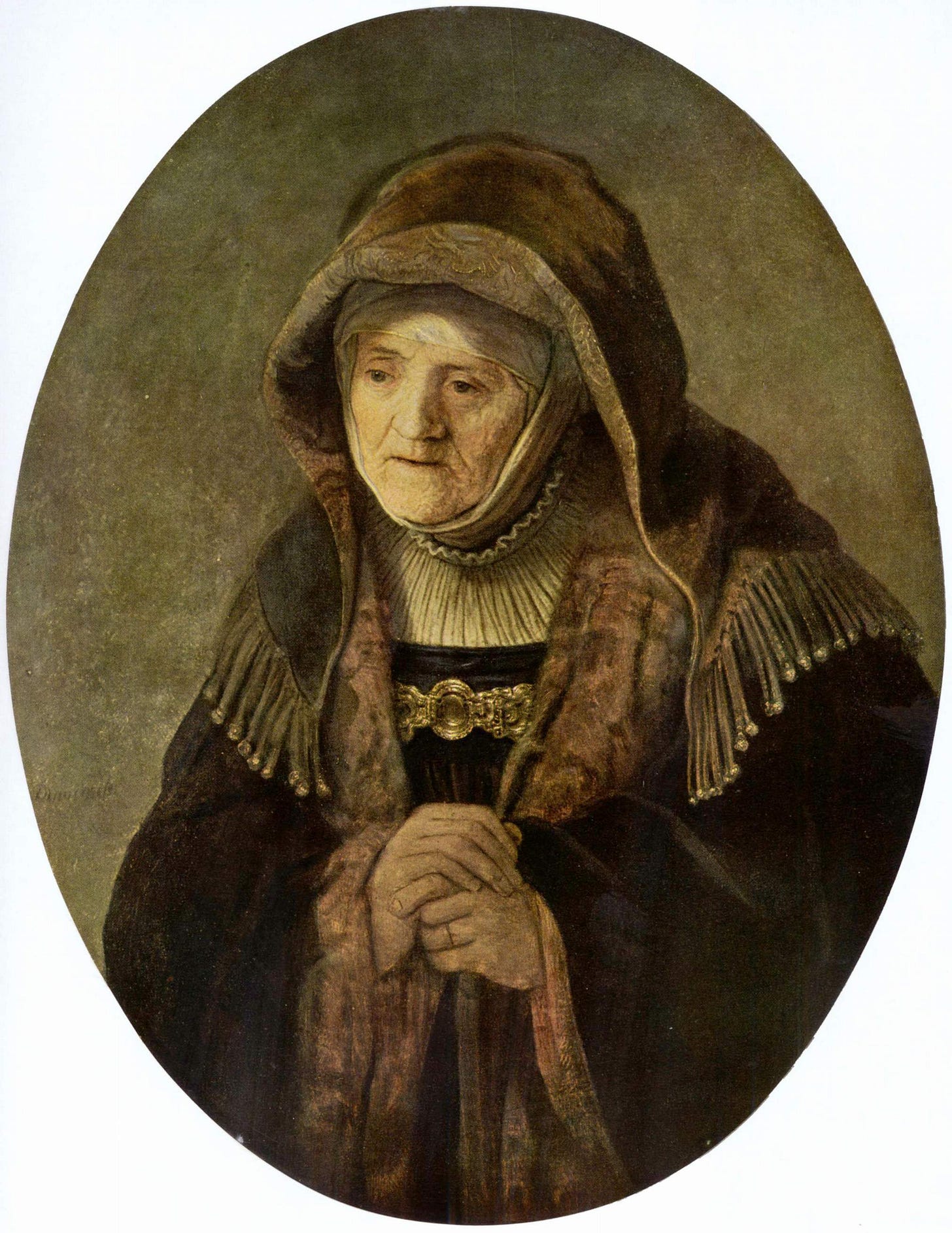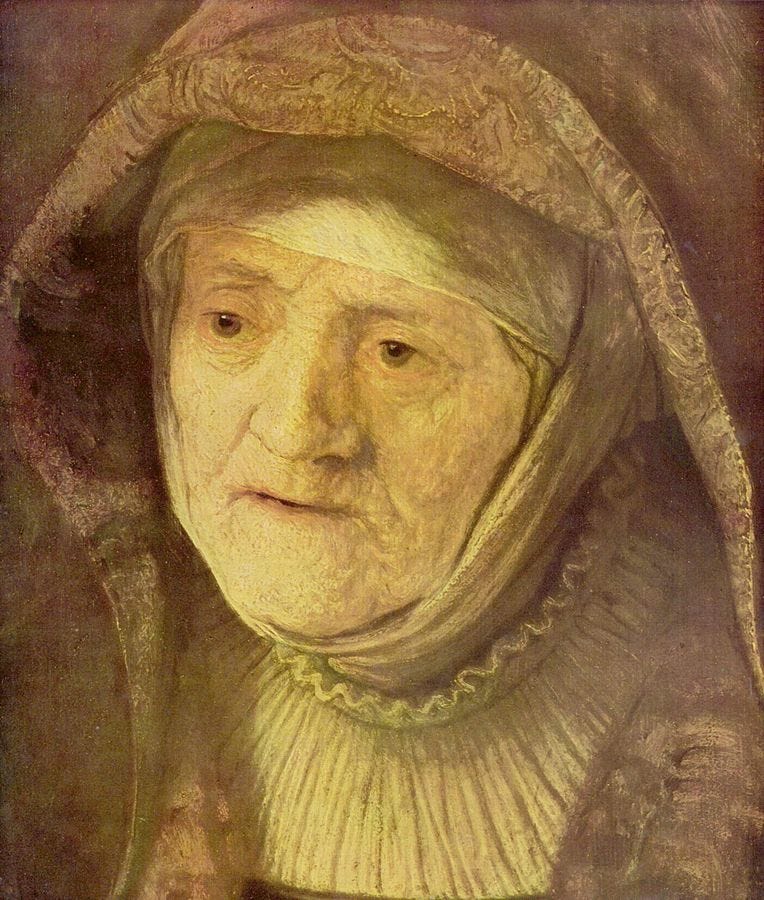Today Buechner writes about portraits and the way in which great portraitists - Rembrandt in particular - help us to see with greater depth of vision.
“[Painting’s ability to help us see the miraculous suchness of things] is particularly true, it seems to me, in the case of great portraits, the way in which a face is framed in a way to make it unforgettable. And to me the great portraitist of all is Rembrandt. I remember as a child going to my grandparents who lived not far from the Metropolitan Museum in New York and going there again and again. He’s so good, and I think especially of one portrait—I wish I could name it for you but I can’t—of an old Dutch woman in a black dress and a tight-fitting white cap and a starched ruff and a sort of waxy pale skin, wrinkled, her upper teeth are gone, her lip is sunken in, her hands folded looking out from that frame. In no sense a remarkable face. If you saw that face sitting across the aisle from you on an airplane, or if you saw it coming down pushing a cart full of groceries, you’d never notice it at all. Not a remarkable face, but a face that has been so remarkably seen by Rembrandt that we are jolted into seeing it remarkably. And that old woman’s face somehow becomes all faces. And all faces are somehow contained in that face.
“And what I think the artist, the painter is doing, as the writer is saying Stop, the painter is saying Look, look at each other’s faces the way Rembrandt looked at the old woman’s face. Or look at your own face, maybe that’s the hardest of all, in the mirror the way that Rembrandt looked at that old woman’s face, which is to say look at it not just for the wrinkles and the sunken upper lip and the white ruff, but look at it for what lies within the face, for the life that makes the face the way it is.
“You’d think that would be easy. It’s so easy to look and see what we pass through in this world, but we don’t. If you’re like me, you see so little. You see what you expect to see rather than what’s there….
“…So, to help us out of our blindness, part of what the painter is doing is saying, See what’s there, not what you expect to see. See what is really present in your life. See yourself, see each other.”
Frederick Buechner, The Remarkable Ordinary: How to Stop, Look, and Listen to Life, Grand Rapids: Zondervan, p24-26.
To help you reflect…
Rembrandt painted many lived in, careworn faces during his lifetime and it’s not clear from the above passage which one of these paintings Buechner has in mind. I have included an image of a Rembrandt painting below or you can do your own search and select an image that draws your attention.
Spend some time looking at your chosen painting.
What do you notice in the painting? What do you notice in yourself as you look?
Soften your gaze and linger in your looking. What do you notice now in the painting? What do you notice in yourself?
Play with bringing this quality of attentiveness into your day. Look at the faces around you in this way and try to see what’s there, not just what you expect to see. Look at your own face and look for what lies within your face - try to catch a glimpse of the life that makes your face the way it is.






I’ve just watched a magpie on the back grass searching for its food, listening attentively and then using its strong wings to fly away leaving an echo. Thank you